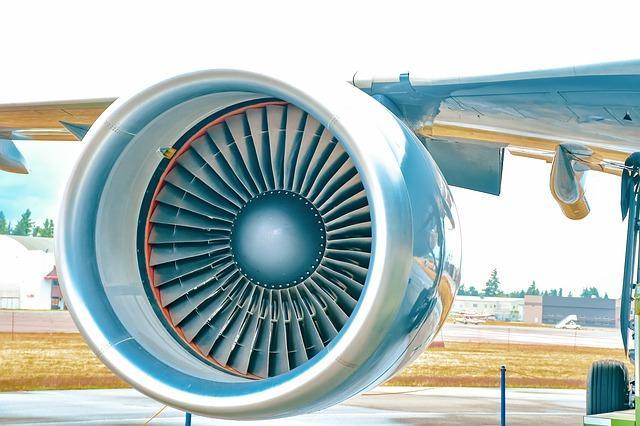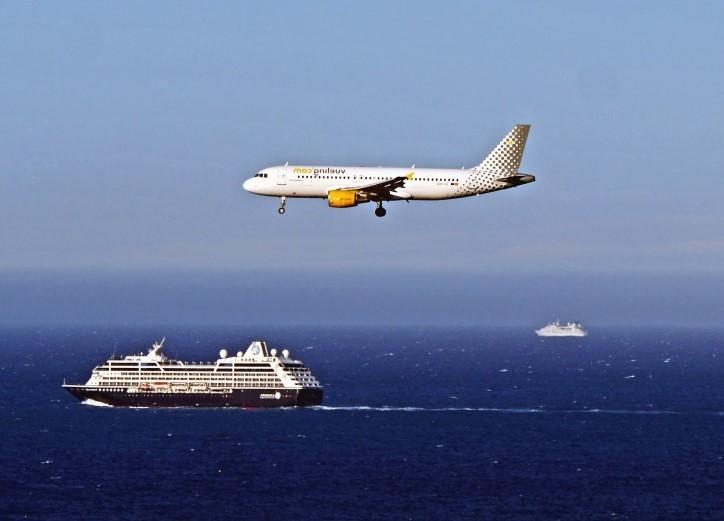How Much Pollution Do Airplanes Produce?


Modern air travel connects us across continents, facilitating global trade and tourism. However, this convenience comes at an environmental cost. Airplanes are in fact significant contributors to greenhouse gas emissions and a major driver of climate change. So, just how much pollution do airplanes generate compared to other travel options?
This article by thedailyECO delves into the environmental impact of air travel, comparing it to other transportation modes. By understanding these numbers, we can make informed choices when we fly, minimizing our individual footprint and contributing to a more sustainable future for our planet.
How much do airplanes pollute?
While planes offer a vital transportation option, their growing popularity raises concerns about their environmental impact. Primarily, they contribute to greenhouse gases, particularly carbon dioxide, which fuels global warming. Currently, air travel accounts for roughly 2% of global carbon emissions.
The carbon footprint of air travel varies depending on numerous factors such as the distance traveled, the type of aircraft used, the number of passengers, and whether it's a domestic or international flight.
A single journey from New York to Los Angeles generates an average of 0.9 metric tons of CO2 per passenger. This signifies a significant impact, equating to roughly 19% of the average global carbon footprint according to the World Bank's estimate of 4.7 tonnes per person per year.
Transatlantic flights further amplify this impact. A journey from New York to London releases approximately 1.6 metric tons of CO2 per passenger, representing nearly 34% of an individual's annual footprint.
For long-haul flights, such as those between continents, the carbon footprint per passenger tends to be higher due to the longer distances traveled. Additionally, other factors like aircraft efficiency, passenger load, and flight routing can impact emissions.
Private jets also carry a hefty environmental cost. Unlike commercial airliners with their shared emissions burden among hundreds of passengers, the limited capacity of private jets translates to a significantly higher carbon dioxide footprint per traveler. Furthermore, the frequent use of smaller airports often necessitates shorter, fuel-inefficient flights at lower altitudes, further amplifying their climate impact compared to longer-distance commercial routes.
Have you heard of electromagnetic pollution? Learn all about it here.

How do airplanes damage the environment?
Airplanes leave a significant mark on our environment, impacting both local communities and the planet as a whole.
Residents living near airports bear the brunt of the noise and air pollution generated by constant takeoffs and landings. Aircraft emissions, laden with harmful pollutants like nitrogen oxides, carbon monoxide, and particulate matter, directly affect the health of people, plants, and animals. Even airport lights disrupt the delicate ecosystems of nocturnal creatures, disorienting birds and altering their feeding and migration patterns.
Building and expanding airports often necessitate clearing land, destroying vital habitats and fragmenting natural areas. This not only disrupts wildlife movement but also eliminates crucial carbon sinks, amplifying the impact of global warming.
But the most significant environmental cost of flying comes from greenhouse gas emissions. The main culprit is carbon dioxide, released during jet fuel combustion. However, its impact is amplified due to its release high in the atmosphere, where it has a stronger warming effect.
Additionally, airplanes emit nitrous oxide (N2O), a potent greenhouse gas with an even greater warming impact. Finally, contrails, the condensation trails left by airplanes, can persist and form cirrus clouds, trapping heat and contributing further to global warming.
Wondering which fuel, diesel or gasoline, emits more air pollution? Dive into this article for the surprising answer
Is a car or plane worse for the environment?
As you might have guessed by now, determining whether a car or a plane is worse for the environment depends on various factors, including the specific context of each mode of transportation and the criteria used for comparison.
In terms of greenhouse gas emissions, airplanes generally emit more CO2 per passenger-mile traveled compared to cars. When it comes to short trips, planes emit around 0.19 kg CO2 per passenger-kilometer, while cars emit an average of 140g CO2 per passenger-kilometer.
However, it is important to note that airplanes can carry many more passengers over longer distances, potentially making their emissions more efficient on a per-passenger basis for certain journeys. In other words, airplanes inherently share the carbon footprint among more people, reducing the individual impact compared to cars.

Do ferries pollute more than planes?
Determining whether ferries pollute more than planes also depends on various factors, such as the specific characteristics of the ferry and plane in question, the distance traveled, and the number of passengers transported.
Ferries primarily rely on diesel fuel, which releases various pollutants including particulate matter, nitrogen oxides, sulfur oxides, and carbon dioxide. Consequently, ferries emit a diverse array of pollutants that directly affect local air quality. It is important to note that ferries affect marine life too. Oil spills, untreated wastewater, and toxic antifouling paints threaten marine life. Underwater noise disrupts animal communication, and debris harms ecosystems.
In contrast, airplanes emit pollutants like carbon dioxide, nitrogen oxides, and water vapor at higher altitudes. While these emissions contribute to global climate change, they have less of an impact on local air quality.
Studies suggest ferries can emit 1.03 kg of CO2 per passenger-kilometer, while short-haul flights average around 0.19 kg. However, it's crucial to consider the specific contexts mentioned above. Short ferry trips within harbors or across calmer waters might be comparable to car travel in terms of emissions, especially when considering passenger load.

What type of transportation does the most damage to the environment?
As we tackle environmental challenges, it's crucial to think about sustainable transportation methods. With a variety of options available, understanding their environmental impacts helps us make decisions that are well-informed and responsible.
For short urban journeys, walking and cycling are, without a doubt, the best option. They emit zero air pollutants and greenhouse gases, contributing to cleaner air and mitigating climate change. Moreover, they offer numerous health benefits, enhancing cardiovascular health and reducing stress, among others.
When it comes to mass transportation, trains and railways are the most environment friendly option. The fact that they are able to transport numerous passengers significantly reduces CO2 emissions per capita compared to personal vehicles.
When it comes to ships, as we have seen in the previous sections, their environmental impact varies greatly depending on their size and fuel type. Smaller vessels utilizing cleaner fuels like biofuels have a significantly lower footprint than larger conventional ships using heavy fuel oil. In this sense, ships generally fall midway between cars and planes in terms of emissions. However, for long-distance travel, ships can still be a more environmentally friendly option compared to planes, but only if they exceed their passenger capacity.
While undeniably convenient, cars carry a significant environmental burden. Each car emits an average of 104g of CO2 per kilometer per passenger, with diesel models emitting even more. This cumulative impact is considerable, especially with the high number of cars on the road.
Finally, airplanes represent the most polluting mode of transportation, generating significant amounts of greenhouse gas emissions. While occasionally unavoidable for long-distance travel, their environmental impact necessitates minimizing their use.
Dive deeper into another critical issue for our planet: plastic in the oceans. Read this other article to learn more.
If you want to read similar articles to How Much Pollution Do Airplanes Produce?, we recommend you visit our Pollution category.
- Gustavo Alonso Rodrigo (Senior University Professor, ETSI Aeronáuticos, Polytechnic University of Madrid, Spain.) and Arturo Benito Ruiz de Villa (Senior University Professor, ETSI Aeronáuticos, Polytechnic University of Madrid, Spain.). The environmental impact of air transport and measures to mitigate it: https://core.ac.uk/download/pdf/148665517.pdf








